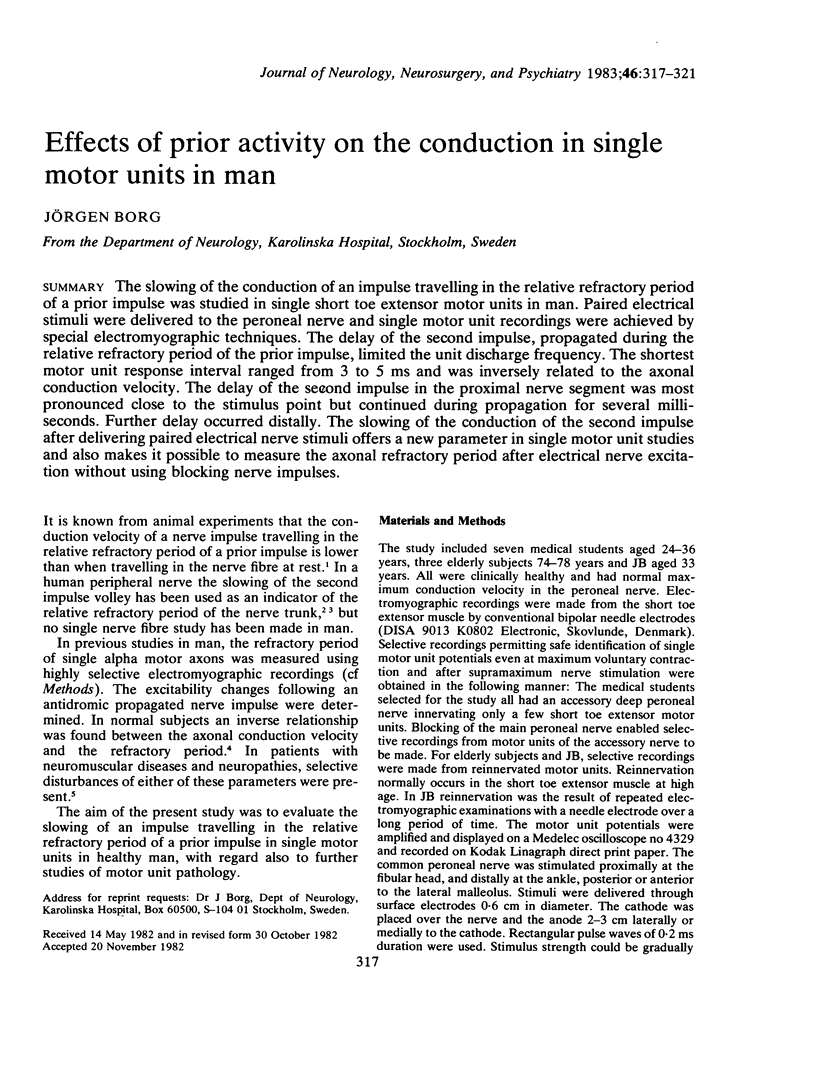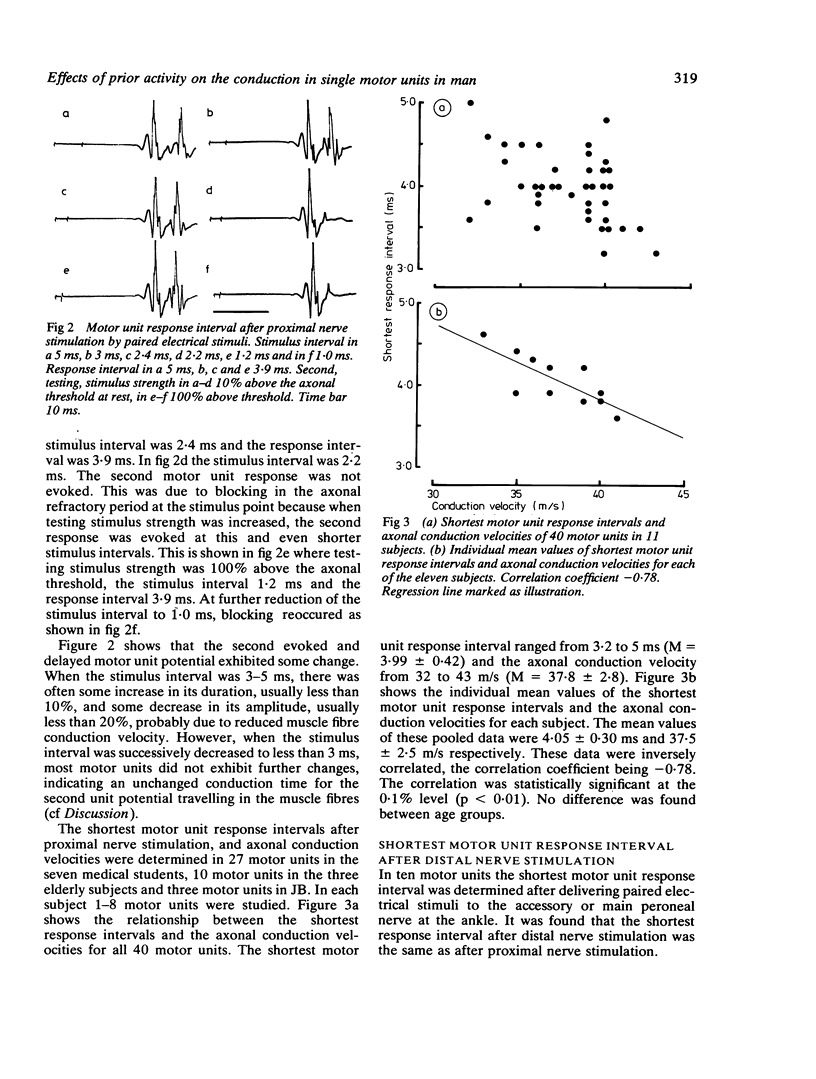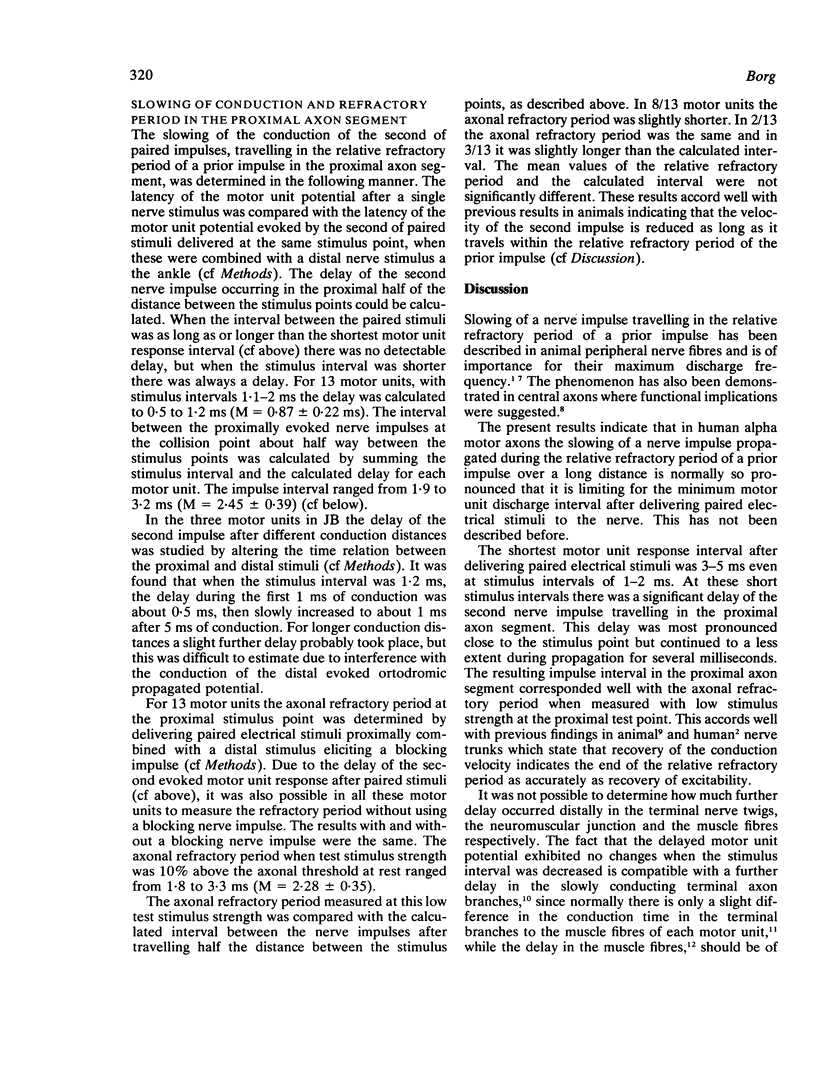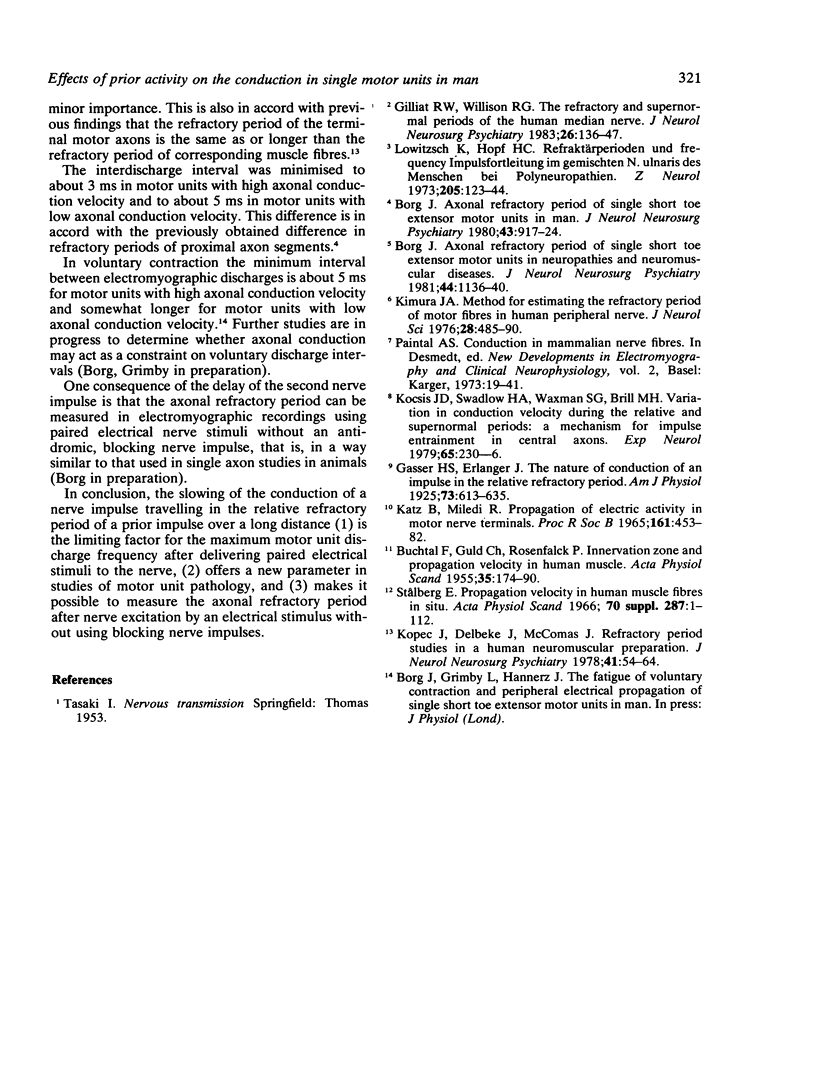Abstract
The slowing of the conduction of an impulse travelling in the relative refractory period of a prior impulse was studied in single short toe extensor motor units in man. Paired electrical stimuli were delivered to the peroneal nerve and single motor unit recordings were achieved by special electromyographic techniques. The delay of the second impulse, propagated during the relative refractory period of the prior impulse, limited the unit discharge, frequency. The shortest motor unit response interval ranged from 3 to 5 ms and was inversely related to the axonal conduction velocity. The delay of the second impulse in the proximal nerve segment was most pronounced close to the stimulus point but continued during propagation for several milliseconds. Further delay occurred distally. The slowing of the conduction of the second impulse after delivering paired electrical nerve stimuli offers a new parameter in single motor unit studies and also makes it possible to measure the axonal refractory period after electrical nerve excitation without using blocking nerve impulses.
Full text
PDF




Selected References
These references are in PubMed. This may not be the complete list of references from this article.
- BUCHTHAL F., GULD C., ROSENFALCK P. Innervation zone and propagation velocity in human muscle. Acta Physiol Scand. 1955 Dec 31;35(2):174–190. doi: 10.1111/j.1748-1716.1955.tb01276.x. [DOI] [PubMed] [Google Scholar]
- Borg J. Axonal refractory period of single short toe extensor motor units in man. J Neurol Neurosurg Psychiatry. 1980 Oct;43(10):917–924. doi: 10.1136/jnnp.43.10.917. [DOI] [PMC free article] [PubMed] [Google Scholar]
- Borg J. Axonal refractory period of single short toe extensor motor units in neuropathies and neuromuscular diseases. J Neurol Neurosurg Psychiatry. 1981 Dec;44(12):1136–1140. doi: 10.1136/jnnp.44.12.1136. [DOI] [PMC free article] [PubMed] [Google Scholar]
- GILLIATT R. W., WILLISON R. G. The refractory and supernormal periods of the human median nerve. J Neurol Neurosurg Psychiatry. 1963 Apr;26:136–147. doi: 10.1136/jnnp.26.2.136. [DOI] [PMC free article] [PubMed] [Google Scholar]
- KATZ B., MILEDI R. PROPAGATION OF ELECTRIC ACTIVITY IN MOTOR NERVE TERMINALS. Proc R Soc Lond B Biol Sci. 1965 Feb 16;161:453–482. doi: 10.1098/rspb.1965.0015. [DOI] [PubMed] [Google Scholar]
- Kimura J. A method for estimating the refractory period of motor fibers in the human peripheral nerve. J Neurol Sci. 1976 Aug;28(4):485–490. doi: 10.1016/0022-510x(76)90119-2. [DOI] [PubMed] [Google Scholar]
- Kocsis J. D., Swadlow H. A., Waxman S. G., Brill M. H. Variation in conduction velocity during the relative refractory and supernormal periods: a mechanism for impulse entrainment in central axons. Exp Neurol. 1979 Jul;65(1):230–236. doi: 10.1016/0014-4886(79)90263-2. [DOI] [PubMed] [Google Scholar]
- Kopec J., Delbeke J., McComas A. J. Refractory period studies in a human neuromuscular preparation. J Neurol Neurosurg Psychiatry. 1978 Jan;41(1):54–64. doi: 10.1136/jnnp.41.1.54. [DOI] [PMC free article] [PubMed] [Google Scholar]
- Lowitzsch K., Hopf H. C. Refraktärperioden und frequente Impulsfortleitung im gemischten N. ulnaris des Menschen bei Polyneuropathien. Z Neurol. 1973;205(2):123–144. [PubMed] [Google Scholar]
- Stalberg E. Propagation velocity in human muscle fibers in situ. Acta Physiol Scand Suppl. 1966;287:1–112. [PubMed] [Google Scholar]


